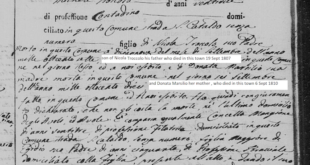When shopping for a mortgage, the Loan Estimate is going to be your shopping tool. It’s a treasure trove that reveals a wide range of costs and other valuable information.
The Loan Estimate or LE replaced the Good Faith Estimate or GFE a few years ago when the Fed put into place some new rules. The GFE showed the rates and closing cost but did not show other important aspects the loan.
The LE is a 3-page document that clearly and simply shows the following:
- Loan Amount
- Interest Rate
- Monthly Payment
- Type of loan and amortization
- If there are any pre-payment penalties or balloon payments
- If you are paying your own taxes and insurance or not
- Loan costs and other costs
- Amount you will need or receive at closing
The LE also shows the breakdown of all the costs. Among them are lender charges such as points, underwriting/admin fees, appraisal fees and credit report fees. These fees you cannot shop for because the lender uses their own approved appraisers and credit reports companies.
There are also title fees, which you can shop for. A title search is when the seller attorney orders a search on the property to see if there are any liens on the property. A lender only wants to lend on a property that is unencumber so that is why this a necessary item that needs to be charged. Because it is a third-party fee, a consumer can choose to shop for this service to see if they can get a lower price.
The next section is recording fees and transfer taxes. Each county will charge a recording fee as real estate transactions are of public record. Certain town/cities may also have a transfer tax, which is a one-time tax that is charged to the borrower to buy in their municipality.
Also included is a section for prepaid items, which includes any interest that you may pay for at the closing since you are charged interest from the time you close to the end of the month, as well as homeowner’s insurance that you buy to make sure that the home is insured at the time of closing.
This section also sets aside funds for your escrow account, which is the account that your taxes and insurance are paid out of. The escrow account must have enough money in it to pay your taxes and insurance when they come due. Different counties have different times of year when the taxes are due.
Finally, you have seller charges for the title, which are added to the buyer charges. A credit for the same amount is then given because it is the seller’s responsibility. Lender credits are also disclosed in this final section. Usually a lender will give you a credit to help pay your closing costs if you opt to take a higher interest rate. The lender makes more interest because of the higher rate so they are willing to help offset some or all of the closing costs depending on the rate.
When shopping for a home loan, you should always ask for a Loan Estimate to do some comparison shopping. Please keep in mind that you should be looking at the rate/terms on the front page and the items that you cannot shop for on pages two. All the other items are just estimates and will ultimately be the same regardless of the lender that you choose.
Also, the lender will tend to overestimate the third-party charges that you can shop for in order to be in compliance. If a lender was to underestimate your closing amount on the LE and then the costs actually come out higher at closing, the lender is liable to pay the difference. So, keep in mind that what you see at closing should be less then what was on your loan estimate.
To contact me, call 773-557-1000 ext. 15, e-mail ron@ronmortgage.com or visit http://www.ronmortgage.com.
 Fra Noi Embrace Your Inner Italian
Fra Noi Embrace Your Inner Italian







